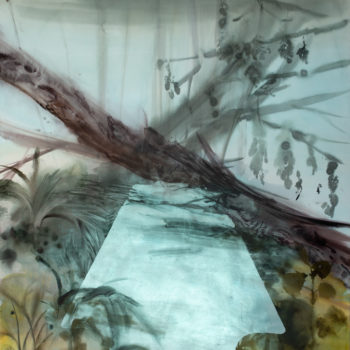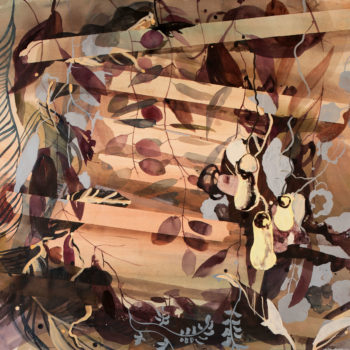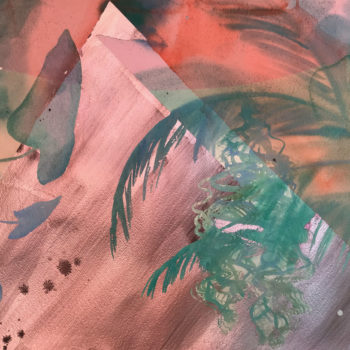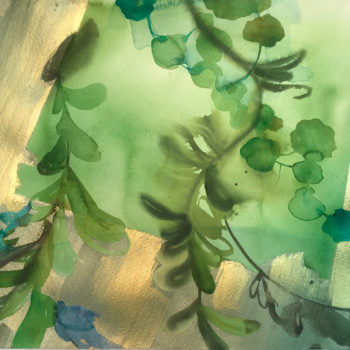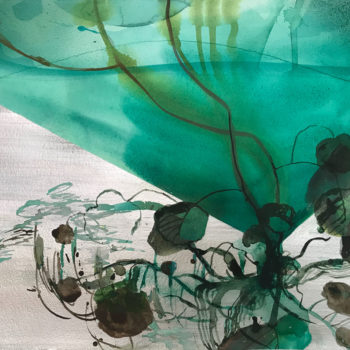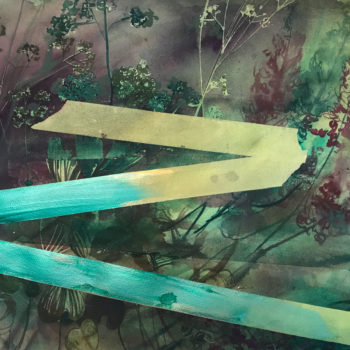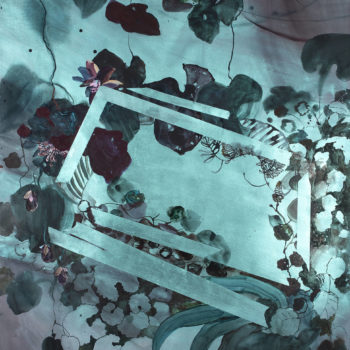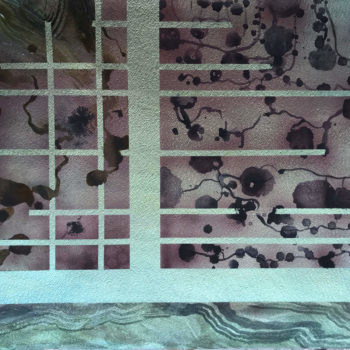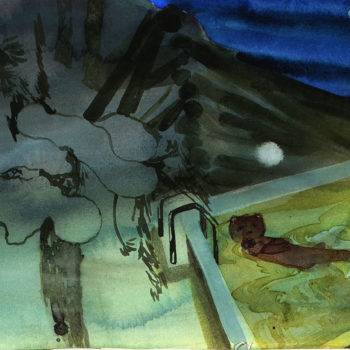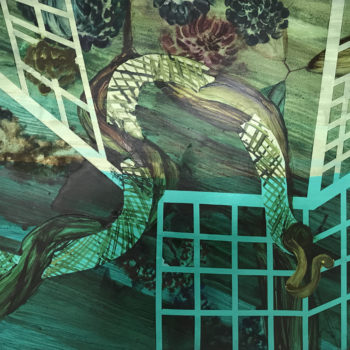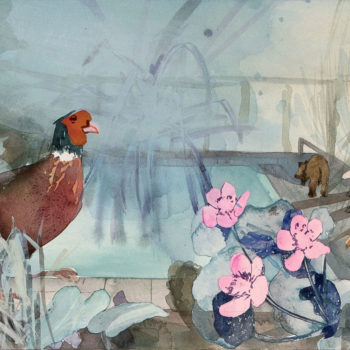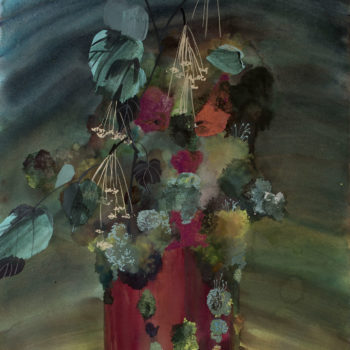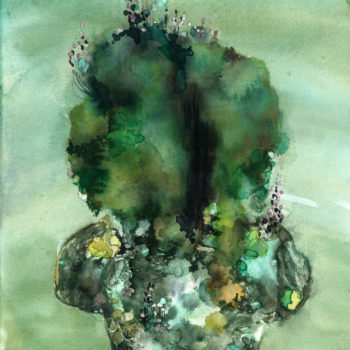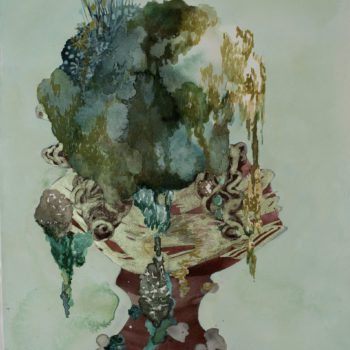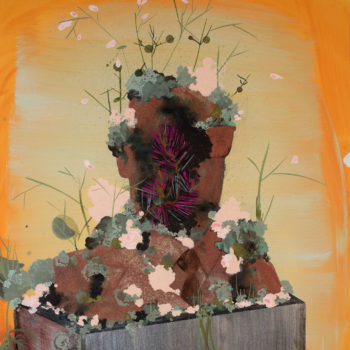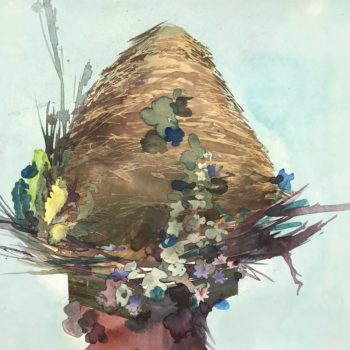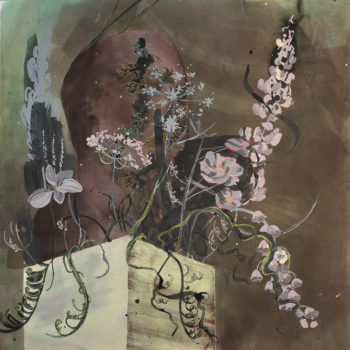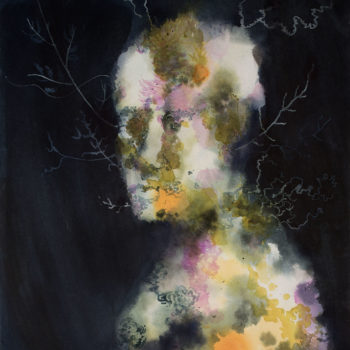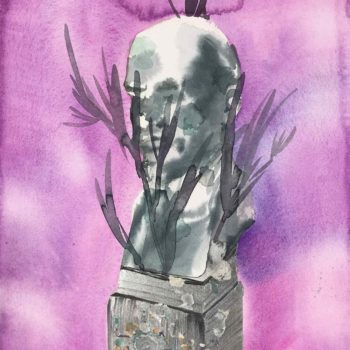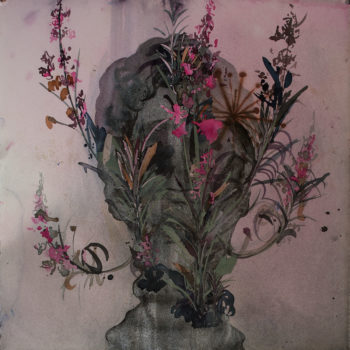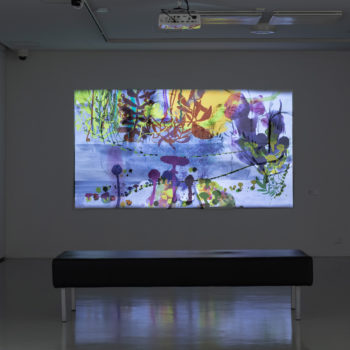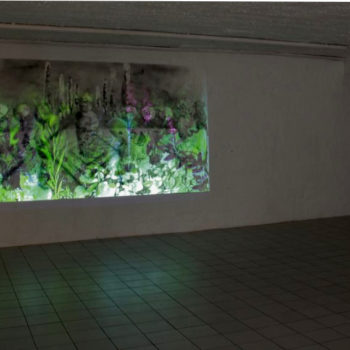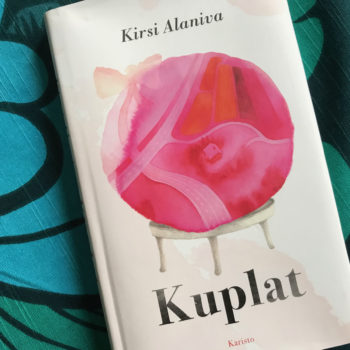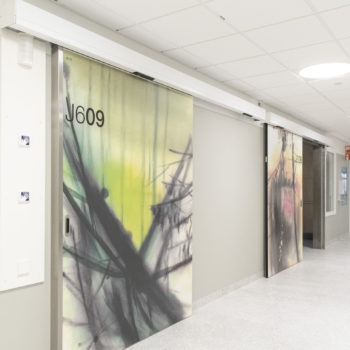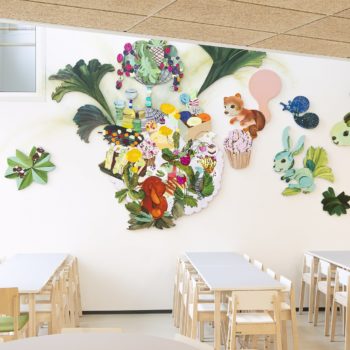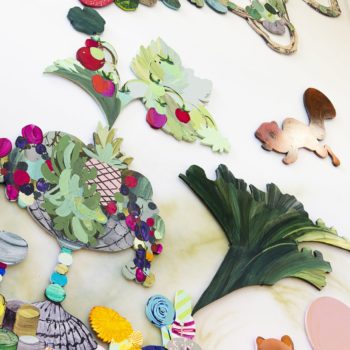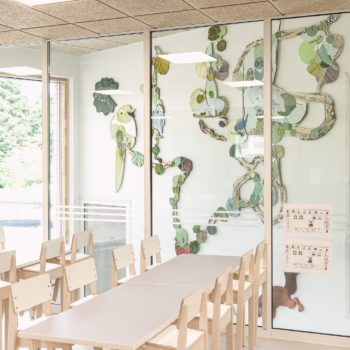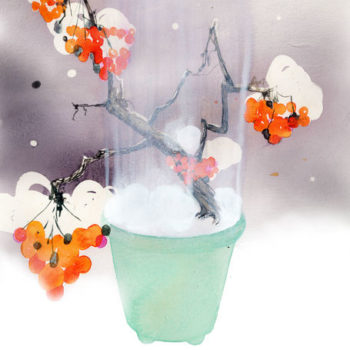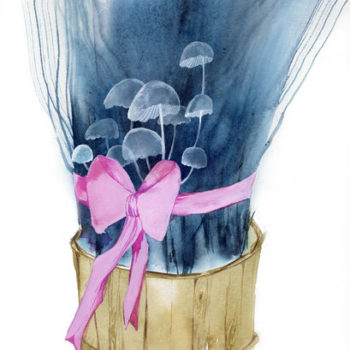Kati Immonen
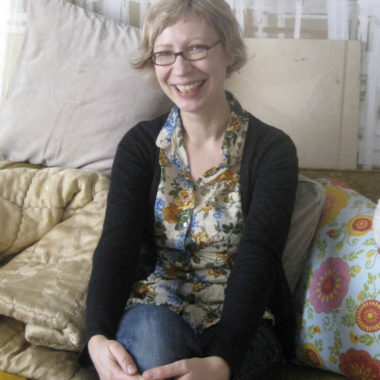
Basic information
b. 1971, Jyväskylän mlk
Visual Artist, Painter
Residence: Turku
Contact information
Phone number: +358415477686
Email: katimariaimmonen@gmail.com
Artist’s Statement
Artist-Curator Discussion
Kati Immonen & Mika Hannula
solo exhibition OVERGROWN
Helsinki Contemporary 5.3.–3.4.2021
Mika Hannula: The name of the exhibition, Overgrown – what does it refer to and what connotations does it have?
Kati Immonen: It refers to natural processes that are independent of humanity. To vitality, to explosions of growth, to hope, and to my desire to believe in nature’s ability to regenerate and overcome the miserable despoilers of the earth. Even the largest and ugliest concrete structures dissolve into non-existence, become mossy and covered with ivy, mould or bushes that poor humans can no longer gain access to without a machete.
MH: Are we talking about some kind of liberating force, or metaphorical joy, even defiance?
KI: Perhaps these are more like fantasies of the future – the idea of a time when the human way of modifying the environment is a thing of the past and the jungle has won. Personally, I see these as liberating paintings.
MH: What in particular have you found this time through this process – in the forest, in the botanical garden, or anywhere else?
KI: When you draw outside in the cold or in a public place in a botanical garden, or in a plush hotel garden on the edge of a luxurious swimming pool in the tropics, the situation is quite different from working from photographs in the peace of your own studio. First, one reservedly observes everyone else around the pool, one is embarrassedly aware of one’s role as an artist, or then you’re suffering in a freezing Finnish forest. At some point it becomes possible to exclude others for a moment and focus on observing, and get excited about the drawing, the scratch of pen on paper, and rejoice when one realizes how the bananas cluster in a bunch, or how lupin blooms are arranged. And enlarging a bramble stalk to make it big will help you find an interesting rhythm in the lines for the drawing. Working outdoors involves short focused moments, strange perspectives, and momentary intensity.
MH: There are two main series of works in the exhibition. Let’s start with these characters, statues that look like things are not going well for them – or are they? What is that about, and what interests you in these characters and situations?
KI: The sculptures of significant men in the Monument series have certainly acquired a new look now when they’re mossy and covered with plants. Somehow I always get a tired little sigh when I look at these statues in the city and in public spaces. I can’t stop laughing at the idea of “cheering up” these sculptures, and that is often the starting point for my work. Genius myths have recently been demolished, and deservedly so, and statues of dictators are being torn down and hidden in the basement.
MH: What about the second series, these pools? What do they symbolize – or do they symbolize anything at all? Modern life, a bygone world or future hope?
KI: The clogged pools symbolize, above all, hope for the future and a belief in nature’s ability to gently repair the ugliness we create. One painting features the KGB’s overgrown swimming pool, which has been invaded by a couple of mice and forest-floor plants. These pools are mostly made by simple painting gestures – a metallic nail polish background colour and traces left by masking tape. The tape marks represent Ugly Structures that squeeze out plants, while sometimes the plants cover the tape marks. The smaller paintings Tamminiemi and Särestö thematically connect the pools to the Monument series. The overgrown pool in the Tamminiemi sauna is home to animals that ex-President Kekkonen shot on a hunting trip: a pheasant, a wild boar and a jay that took an accidental bullet.
MH: The extraordinary work in the exhibition is an installation consisting of a large-scale painting and an animation that’s projected onto it. Tell us about the starting point, background and progress of this work.
KI: A few years ago, I had a go at drawing on the iPad to pass the time on a flight. I drew awkwardly with my finger, but anyway the easy experimentation with colours was nice – it’s difficult to change a black area to pink, for example, when I’m really painting. I later bought an iPad and a pen for sketching and (accidentally) found my drawings turning into simple animations.
MH: And what does the second part of the title of the work refer to, this Infinity pool?
KI: It’s that kind of wonderful luxury pool where the pool water drains over the edge. In theory it looks like the swimming pool is merging with the sea horizon. In practice, however, it might not look quite like that – although I do have experience of it. The smell of chlorine is in the air and the infinity effect works only from a carefully selected perspective, not from where you’re swimming, and what you actually see is exploded rocks on the beach and concrete structures.
Kati Immonen & Mika Hannula
solo exhibition OVERGROWN
Helsinki Contemporary 5.3.–3.4.2021
Mika Hannula: The name of the exhibition, Overgrown – what does it refer to and what connotations does it have?
Kati Immonen: It refers to natural processes that are independent of humanity. To vitality, to explosions of growth, to hope, and to my desire to believe in nature’s ability to regenerate and overcome the miserable despoilers of the earth. Even the largest and ugliest concrete structures dissolve into non-existence, become mossy and covered with ivy, mould or bushes that poor humans can no longer gain access to without a machete.
MH: Are we talking about some kind of liberating force, or metaphorical joy, even defiance?
KI: Perhaps these are more like fantasies of the future – the idea of a time when the human way of modifying the environment is a thing of the past and the jungle has won. Personally, I see these as liberating paintings.
MH: What in particular have you found this time through this process – in the forest, in the botanical garden, or anywhere else?
KI: When you draw outside in the cold or in a public place in a botanical garden, or in a plush hotel garden on the edge of a luxurious swimming pool in the tropics, the situation is quite different from working from photographs in the peace of your own studio. First, one reservedly observes everyone else around the pool, one is embarrassedly aware of one’s role as an artist, or then you’re suffering in a freezing Finnish forest. At some point it becomes possible to exclude others for a moment and focus on observing, and get excited about the drawing, the scratch of pen on paper, and rejoice when one realizes how the bananas cluster in a bunch, or how lupin blooms are arranged. And enlarging a bramble stalk to make it big will help you find an interesting rhythm in the lines for the drawing. Working outdoors involves short focused moments, strange perspectives, and momentary intensity.
MH: There are two main series of works in the exhibition. Let’s start with these characters, statues that look like things are not going well for them – or are they? What is that about, and what interests you in these characters and situations?
KI: The sculptures of significant men in the Monument series have certainly acquired a new look now when they’re mossy and covered with plants. Somehow I always get a tired little sigh when I look at these statues in the city and in public spaces. I can’t stop laughing at the idea of “cheering up” these sculptures, and that is often the starting point for my work. Genius myths have recently been demolished, and deservedly so, and statues of dictators are being torn down and hidden in the basement.
MH: What about the second series, these pools? What do they symbolize – or do they symbolize anything at all? Modern life, a bygone world or future hope?
KI: The clogged pools symbolize, above all, hope for the future and a belief in nature’s ability to gently repair the ugliness we create. One painting features the KGB’s overgrown swimming pool, which has been invaded by a couple of mice and forest-floor plants. These pools are mostly made by simple painting gestures – a metallic nail polish background colour and traces left by masking tape. The tape marks represent Ugly Structures that squeeze out plants, while sometimes the plants cover the tape marks. The smaller paintings Tamminiemi and Särestö thematically connect the pools to the Monument series. The overgrown pool in the Tamminiemi sauna is home to animals that ex-President Kekkonen shot on a hunting trip: a pheasant, a wild boar and a jay that took an accidental bullet.
MH: The extraordinary work in the exhibition is an installation consisting of a large-scale painting and an animation that’s projected onto it. Tell us about the starting point, background and progress of this work.
KI: A few years ago, I had a go at drawing on the iPad to pass the time on a flight. I drew awkwardly with my finger, but anyway the easy experimentation with colours was nice – it’s difficult to change a black area to pink, for example, when I’m really painting. I later bought an iPad and a pen for sketching and (accidentally) found my drawings turning into simple animations.
MH: And what does the second part of the title of the work refer to, this Infinity pool?
KI: It’s that kind of wonderful luxury pool where the pool water drains over the edge. In theory it looks like the swimming pool is merging with the sea horizon. In practice, however, it might not look quite like that – although I do have experience of it. The smell of chlorine is in the air and the infinity effect works only from a carefully selected perspective, not from where you’re swimming, and what you actually see is exploded rocks on the beach and concrete structures.


